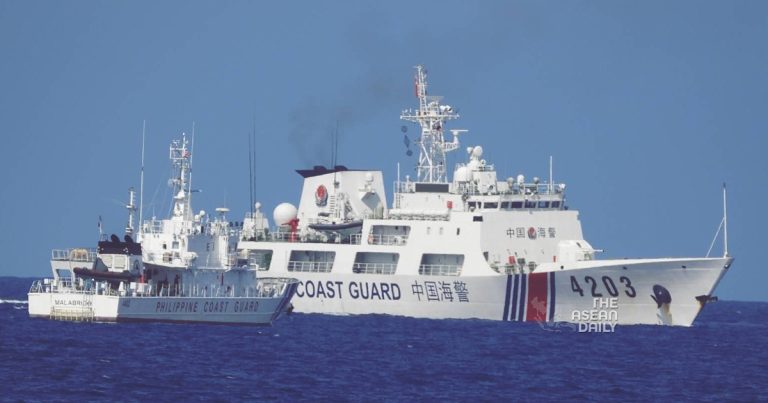19-1-2024 (MANILA) In a pivotal bilateral meeting on Wednesday, January 17, the Philippines and China have reached a consensus to enhance their maritime communication mechanism in the South China Sea, commencing in 2024. The announcement, shared by the Philippines’ Department of Foreign Affairs (DFA) on Thursday, highlighted the commitment to improve communications between foreign ministries and coast guards of both nations.
China’s Ministry of Foreign Affairs echoed the sentiment, revealing that China’s Assistant Foreign Minister Nong Rong and the Philippines’ Foreign Undersecretary Theresa Lazaro engaged in a candid and comprehensive exchange of views during the 8th Bilateral Consultation Mechanism on the South China Sea, held in Shanghai.
The significance of this agreement lies in the context of the South China Sea, particularly the West Philippine Sea, where communication lines have long existed between the two nations on maritime issues and incidents. Under President Ferdinand Marcos Jr., there was a concerted effort to enhance these communication channels.
During Marcos Jr.’s state visit to Beijing in January 2023, a crucial agreement was finalized to establish a communication mechanism on maritime issues between China’s Ministry of Foreign Affairs and the Philippines’ DFA. This mechanism serves as a real-time hotline for diplomats to communicate promptly during incidents in the South China Sea.
However, the implementation of the communication mechanism faced delays, and there were instances where Beijing did not respond promptly. The DFA cited an incident in August 2023, where the Chinese Coast Guard used water cannons on Philippine Navy-contracted ships during a resupply mission to Ayungin Shoal in the West Philippine Sea. Beijing’s delayed response prompted the DFA to urge China to reciprocate with urgency.
The Philippines last utilized the communication mechanism in December 2023 when the Chinese Coast Guard again used water cannons on Philippine ships in Ayungin Shoal and Scarborough Shoal. This led to the lodging of a diplomatic protest through a phone call, followed by formal protests by the Philippine embassy in Beijing and the summoning of the Chinese ambassador in Manila.
Ayungin Shoal, a flashpoint over 100 nautical miles from the coast of Palawan, is within the Philippines’ exclusive economic zone but is claimed by China. It has become a symbol of tension between the two nations.
The recent meeting in Shanghai witnessed an agreement to calmly address incidents in the South China Sea through diplomacy. The importance of continuous dialogue to maintain peace and stability at sea was emphasized, with both sides presenting their respective positions on Ayungin Shoal. Mutual commitment to avoiding the escalation of tensions was reiterated.
China maintains its sweeping claim over the South China Sea, as exemplified by the disputed dashes on its maps. Despite a 2016 arbitral award declaring this claim invalid, China insists on its position. Ayungin Shoal, home to the aging BRP Sierra Madre, is a focal point where resupply missions play a vital role.
Details of the meeting in Shanghai were not disclosed, but the DFA revealed that both sides agreed to handle incidents in the South China Sea through diplomacy, showcasing a shared commitment to regional stability. The unresolved promise to remove the BRP Sierra Madre remains a point of contention, with China insisting on its removal.




